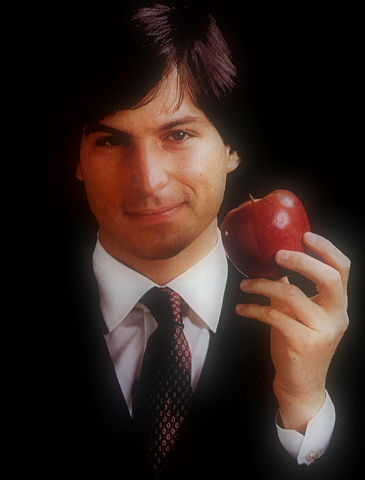 NEWS
NEWS
 NEWS
NEWS
 NEWS
NEWS
![]() So, as you have already heard by now, Apple co-founder Steve Jobs has died.
So, as you have already heard by now, Apple co-founder Steve Jobs has died.
I spent the evening with John Furrier and Kien Tran after closing out #theCube’s last broadcast day at Oracle OpenWorld this week and listened to the many stories about Jobs and Apple two avid fans had to tell. I came back to the hotel here in San Francisco here and poured through the hundreds of activity stream messages expressing their guttural reactions to the passing of Steve, and even read the reactions of my fellow co-workers here at SiliconANGLE from Kristen Nicole and Alex Williams.
As such, I’ve felt the inevitable pull at the heartstrings when such a large man passes from this world. Even a hardcore PC fanatic like myself can’t deny the impact this man has had on the industry I cover.
So, like many of you, I let the waves of Jobs nostalgia wash over me through the various feeds I consume. Just before I decided to turn in for the night, I found a speech from Steve Jobs to the attendees at WWDC in 1997.
If you recall, in 1997, this was a Jobs who had recently resumed control of Apple (an Apple in a bit of distress and disarray). At the onset of his time on stage, he simply said “let’s use this time to talk.”
He then proceeded to field a dozen or so comments and questions from the attendees.
To be honest, I’m still in the middle of watching this video myself. What made me stop to write this blog post was the question I’ve embedded below.
The attendee asks the question: You said in your opening that there were lots of holes that Apple couldn’t necessarily do by themselves. As a visionary, could you maybe spend a few minutes talking about those holes?
Steve puts his head in his hands for a few pregnant moments, and then launches into a colorful and prosaic story of the experience of working at NeXT and Pixar, living in a high speed computing and communications environment, and the value of having a personal cloud.
He describes the security and convenience of having a “home directory” that follows him from device to device. He talks about how his UI and preferences are the same from machine to machine. He brags about the number of crashes and personal data loss he’s had in seven years (the number was zero).
And then he talks about how Apple could achieve this for their customer. He describes a future with ultra-high-speed connectivity for the average user (not just the average geek). He talks about the beauty and “betterness” of a machine with no moving parts but a keyboard and mouse.
The longer I watched his answer, the further my jaw dropped, and I finally started to get the fascination with this guy.
Granted, there was already a bit of that reverence for the man that PC guys like myself find a bit grating evident in the crowd at that WWDC, but he was still facing a somewhat hostile environment, given the state of Apple at the time.
Here he was, though, fearlessly describing what could only at the time be called a utopian future (given the state of the ‘net at the time) to a group of Apple developers, some of whom had seen their pet projects receive “bullets to the head,” as Jobs had put it earlier.
Fast forward fourteen years, had anyone given the same speech, he’d be called pedestrian, because he’d be describing reality. Steve Jobs laid out a vision in 1997, and worked every day he could to execute and achieve that vision until just a matter of weeks ago.
And unlike most people with that degree of dedication and devotion to an ideal, he succeeded.
It’s inspiring.
One of the parting comments John left me with tonight as I marched back to the hotel was that he, like most other folks writing blog posts tonight, had stories to tell where he could brag of personal encounters with Steve Jobs.
“But,” he said, “rather than show off how close I was or wasn’t to Steve, I’d rather show the world my tribute to him by making what I do and toil away at amazing, in the same way he made Apple products amazing.”
It’s a vision that carried Steve through the front and back end of the internet boom, into the New Media revolution, up to the proliferation of personal and enterprise cloud and on to the golden age of smart mobile devices (all revolutions he had a strong hand in personally fomenting).
If you’re not inspired by that level of vision and prescience, regardless of your computational dogma, you’re simply not human.
Support our mission to keep content open and free by engaging with theCUBE community. Join theCUBE’s Alumni Trust Network, where technology leaders connect, share intelligence and create opportunities.
Founded by tech visionaries John Furrier and Dave Vellante, SiliconANGLE Media has built a dynamic ecosystem of industry-leading digital media brands that reach 15+ million elite tech professionals. Our new proprietary theCUBE AI Video Cloud is breaking ground in audience interaction, leveraging theCUBEai.com neural network to help technology companies make data-driven decisions and stay at the forefront of industry conversations.